In the ever-evolving digital landscape, email marketing has emerged as a cornerstone of successful insurance sales strategies. With its ability to reach a vast audience, deliver personalized messages, and track customer engagement, email marketing offers a potent platform for insurance professionals to connect with potential clients, nurture leads, and drive conversions.
This comprehensive guide delves into the intricacies of email marketing for insurance, providing actionable tips and expert insights to help you craft compelling campaigns that resonate with your target audience. From crafting captivating subject lines to leveraging segmentation and targeting, you’ll discover proven techniques to maximize your email marketing efforts and achieve tangible results.
Crafting Captivating Subject Lines
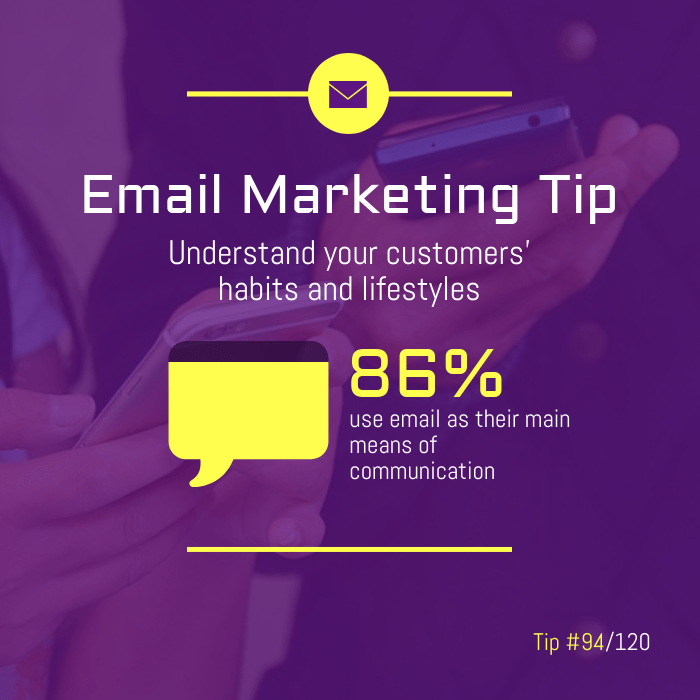
Creating compelling subject lines is the gateway to capturing attention and encouraging recipients to open your email. Here’s how to craft subject lines that resonate:
Keep it Concise and Action-Oriented
- Limit subject lines to 50 characters or less, ensuring mobile-friendliness.
- Use action-oriented verbs that convey a sense of urgency or curiosity.
- Avoid unnecessary words or jargon.
Personalize the Subject Line
- Include the recipient’s name or company to establish a personal connection.
- Reference previous interactions or shared interests to create relevance.
- Segment your email list based on demographics or preferences for targeted subject lines.
Leverage Curiosity and Exclusivity
- Pose thought-provoking questions that pique interest and compel the recipient to open the email.
- Offer exclusive content or limited-time promotions to create a sense of urgency.
- Highlight unique features or benefits that set your insurance offerings apart.
Optimize for Mobile Devices
- Ensure subject lines are easily readable on smaller screens.
- Avoid using special characters or symbols that may not render properly on all devices.
- Test subject lines across different devices to ensure optimal display.
A/B Test Different Subject Lines
- Experiment with various subject lines to determine what resonates best with your audience.
- Use email marketing platforms or tools that allow for A/B testing.
- Continuously monitor and adjust your subject lines based on performance data.
Personalizing the Email Body
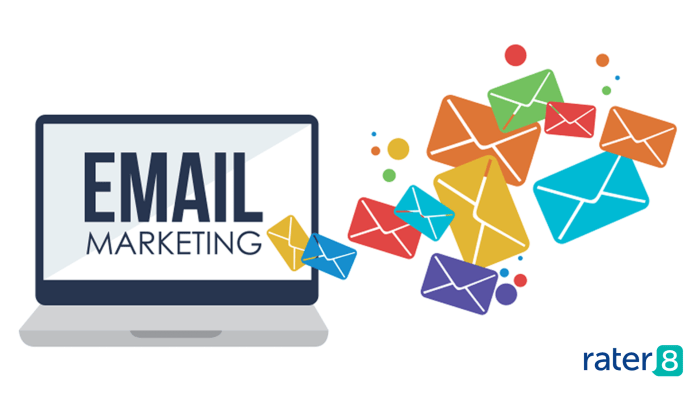
Crafting personalized emails is crucial for forging deeper connections with recipients, fostering trust, and increasing the likelihood of conversion. To achieve personalization, leverage customer data and incorporate dynamic content.
Gathering and Utilizing Customer Data
Gather customer data through various channels such as surveys, website interactions, email engagement, and social media interactions. Utilize this data to create detailed customer profiles that include demographics, preferences, and past purchase history.
- Segment your customer base based on shared characteristics, behaviors, and interests to deliver targeted and relevant messages.
- Use customer names, company names, or other personal identifiers in the email body to create a sense of familiarity.
- Personalize the email content based on the recipient’s location, language, and time zone to enhance relevance.
Incorporating Dynamic Content
Incorporate dynamic content into your emails to deliver tailored messages that resonate with each recipient. Dynamic content can include personalized product recommendations, relevant blog posts, or exclusive offers.
- Use conditional statements to display different content based on specific criteria, such as customer preferences or past interactions.
- Personalize the email subject line based on the recipient’s data to increase open rates.
- Include interactive elements such as polls, surveys, or quizzes to engage recipients and gather valuable insights.
Designing Engaging Email Content
Intro paragraphCrafting visually appealing emails is crucial for capturing the recipient’s attention in a crowded inbox. By incorporating high-quality images, videos, and interactive elements, you can enhance the impact of your email and increase engagement.
Incorporating Visual Elements
- High-Quality Images: Use visually striking and relevant images that align with your brand and message. Ensure they are high-resolution and optimized for email rendering.
- Videos: Incorporate short, engaging videos to captivate your audience and deliver your message in a dynamic way. Keep videos brief and ensure they are compatible with various email clients.
- Interactive Elements: Add interactive elements like GIFs, polls, surveys, or clickable buttons to enhance user engagement. These elements make your emails more dynamic and encourage recipients to interact with your content.
Designing for Readability
- Clear and Concise: Keep your email copy clear, concise, and easy to understand. Use simple language and avoid jargon or technical terms that might alienate your audience.
- Scannable Format: Design your email for easy scanning. Use bullet points, short paragraphs, and headings to break up the text and make it more readable.
- Mobile-Friendly Design: Ensure your emails are optimized for mobile devices. Use responsive design techniques to ensure your emails render correctly on different screen sizes.
Structuring Effective Calls-to-Action
A key aspect of successful email marketing for insurance solicitation is crafting compelling calls-to-action (CTAs) that encourage recipients to take the desired action, such as requesting a quote, visiting your website, or scheduling an appointment.
Effective CTAs can significantly boost your conversion rates and drive leads. Here’s how to structure effective CTAs in your insurance solicitation emails:
Design Compelling CTAs
- Clarity and Simplicity: Use clear, concise language that leaves no room for ambiguity. Avoid jargon or complex terms that might confuse your audience.
- Action-Oriented Verbs: Employ strong action-oriented verbs that create a sense of urgency and compel recipients to act. Examples include “Get a Quote,” “Schedule a Consultation,” or “Learn More.”
- Personalization: Tailor your CTA to match the recipient’s specific needs and interests. For instance, if you’re targeting homeowners, your CTA could be “Protect Your Home with Our Homeowner’s Insurance.”
- Create a Sense of Urgency: Incorporate elements of urgency to encourage immediate action. Phrases like “Limited Time Offer” or “Don’t Miss Out” can create a sense of urgency and increase click-through rates.
- Use Contrasting Colors: Make your CTA button or link stand out by using contrasting colors that grab attention. Ensure the color scheme aligns with your brand identity and email design.
Strategic CTA Placement
- Above the Fold: Place your CTA prominently above the fold, ensuring it’s visible without scrolling. This increases the chances of recipients noticing and clicking on your CTA.
- Within the Body: Include additional CTAs throughout the email body, reinforcing the desired action and providing multiple opportunities for recipients to engage.
- Footer CTA: Don’t forget to include a CTA in the email footer as a final reminder. This is particularly useful for longer emails where recipients might not scroll all the way to the top.
- Multiple CTAs: Consider using multiple CTAs with different levels of commitment. For example, you could have a primary CTA for immediate action and a secondary CTA for those who need more information before taking the next step.
Leveraging Segmentation and Targeting
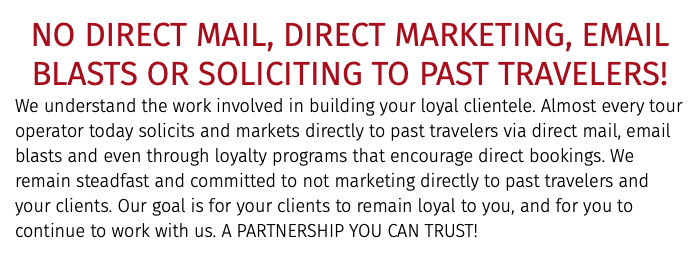
Segmenting your email list and targeting specific audiences with tailored messages can significantly boost your insurance solicitation efforts. It allows you to deliver highly relevant content that resonates with each recipient, increasing engagement, conversion rates, and overall ROI.
Creating Targeted Email Campaigns
-
-*Analyze Demographics and Behavior
Gather data on your subscribers’ demographics, such as age, gender, location, and income, as well as their behavior, including website visits, email open rates, and click-through rates.
-*Define Target Groups
Based on your analysis, create distinct target groups with shared characteristics and interests. This could involve segmenting by age range, location, product preferences, or even life stage.
-*Craft Tailored Messages
Develop personalized email content that speaks directly to each target group’s needs, pain points, and aspirations. Use language, imagery, and offers that are relevant to their unique interests.
Managing Segmented Email Lists
-
-*Maintain Clean Lists
Regularly clean your email lists to remove inactive or invalid email addresses. This ensures that your emails reach active subscribers who are more likely to engage with your content.
-*Update Subscriber Profiles
Encourage subscribers to update their preferences and information over time. This helps you keep your segments up-to-date and deliver increasingly relevant content.
-*Monitor and Adjust
Continuously monitor the performance of your segmented campaigns. Analyze open rates, click-through rates, and conversion rates to identify what works best for each segment. Make adjustments to your targeting and messaging strategies accordingly.
Optimizing Email Deliverability
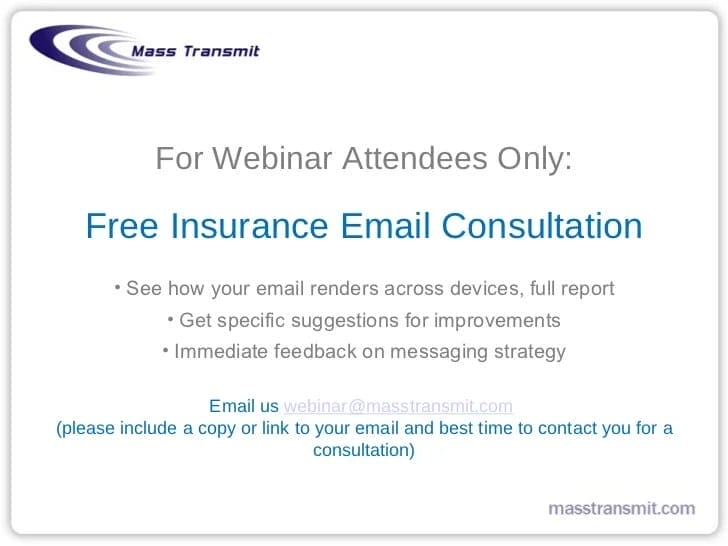
Effective email marketing campaigns rely heavily on email deliverability.
Several factors can influence whether an email successfully reaches its intended recipient or ends up in the spam folder. By understanding these factors and implementing best practices, insurance marketers can enhance their email deliverability and ensure their messages are seen by their target audience.
Improving Email Deliverability
- Maintain a Healthy Sender Reputation: Build a positive sender reputation by consistently sending relevant, engaging, and valuable content. Avoid sending emails that are likely to be marked as spam, such as those with misleading subject lines or irrelevant content.
- Use a Reputable Email Service Provider (ESP): Choose an ESP that has a good reputation and follows best practices for email deliverability. A reliable ESP will help ensure your emails are delivered to inboxes rather than spam folders.
- Authenticate Your Emails: Implement email authentication protocols such as Sender Policy Framework (SPF), DomainKeys Identified Mail (DKIM), and Domain-based Message Authentication, Reporting, and Conformance (DMARC) to verify the authenticity of your emails and reduce the likelihood of being marked as spam.
- Keep Your Email List Clean: Regularly remove inactive and invalid email addresses from your list to maintain a high level of engagement and avoid spam traps. Sending emails to inactive or invalid addresses can negatively impact your sender reputation.
- Personalize Your Emails: Personalizing email subject lines and content can increase open rates and reduce the chances of your emails being marked as spam. Use personalized information such as the recipient’s name, location, or past interactions with your company to make your emails more relevant and engaging.
Avoiding Spam Filters
- Avoid Spam Trigger Words: Familiarize yourself with common spam trigger words and phrases and avoid using them in your email subject lines and content. Some examples include “free,” “urgent,” “limited time offer,” and “click here.” Using these words can increase the likelihood of your emails being filtered as spam.
- Use Descriptive Subject Lines: Create clear and concise subject lines that accurately reflect the content of your email. Avoid using misleading or sensational subject lines, as these can trigger spam filters and reduce open rates.
- Avoid Excessive HTML and Images: While HTML and images can enhance the visual appeal of your emails, using too much of them can trigger spam filters. Keep your HTML and image usage moderate and ensure your emails are text-heavy. A good rule of thumb is to have a text-to-image ratio of at least 60:40.
- Test Your Emails: Before sending out your email campaign, test it using a spam checker tool to identify any potential issues that could cause your emails to be filtered as spam. This will allow you to make necessary adjustments and improve your email deliverability.
Tracking and Measuring Email Performance

Tracking and measuring email performance is crucial for evaluating the success of your insurance email marketing campaigns. By monitoring key metrics, you can identify areas for improvement, optimize future campaigns, and maximize your return on investment (ROI).
Setting Relevant Key Performance Indicators (KPIs)
Start by defining relevant KPIs that align with your specific campaign objectives. Common email marketing KPIs include:
- Open rate: The percentage of recipients who opened your email.
- Click-through rate (CTR): The percentage of recipients who clicked on a link within your email.
- Conversion rate: The percentage of recipients who took a desired action, such as requesting a quote or purchasing a policy.
- Bounce rate: The percentage of emails that were undeliverable due to invalid email addresses or full inboxes.
- List growth rate: The rate at which your email list is growing.
Analyzing Email Metrics and Optimizing Campaigns
Regularly analyze your email metrics to identify trends and patterns. Use this data to optimize future campaigns by:
- Segmenting your email list: Divide your list into smaller, more targeted groups based on demographics, behavior, or interests.
- Personalizing your emails: Use dynamic content to tailor your emails to each recipient, addressing them by name and including relevant information.
- Optimizing your subject lines: Keep subject lines short, clear, and attention-grabbing to increase open rates.
- Testing different email formats and designs: Experiment with different layouts, colors, and images to find what resonates best with your audience.
- Automating your email campaigns: Use email marketing software to automate tasks such as sending emails, tracking performance, and nurturing leads.
By continuously tracking and measuring your email performance, you can gain valuable insights into what works and what doesn’t, enabling you to fine-tune your campaigns and achieve better results.
Complying with Legal and Ethical Requirements
Email marketing, while a powerful tool for reaching potential customers, must adhere to legal and ethical standards to maintain trust and avoid legal consequences.
Understanding and complying with these requirements ensures your email campaigns are conducted responsibly and respectfully.
Navigating Spam Laws
Spam laws vary across jurisdictions, but generally, it’s essential to obtain consent before sending marketing emails.
- Express Consent: Explicit permission granted by individuals who agree to receive emails from your company.
- Implied Consent: Inferred consent based on a prior business relationship, such as existing customers or those who have provided their contact information in a non-marketing context.
Ensure you have a clear and documented consent process in place.
Handling Personal Data Responsibly
Personal data collected through email marketing must be handled responsibly and securely.
- Data Protection Regulations: Comply with relevant data protection regulations, such as the General Data Protection Regulation (GDPR) in the European Union, which sets strict guidelines for handling personal data.
- Data Security: Implement robust security measures to protect personal data from unauthorized access, use, or disclosure.
- Data Retention: Retain personal data only for as long as necessary for the specific purpose for which it was collected.
Respecting individuals’ privacy rights and handling their data responsibly builds trust and enhances your reputation.
Ensuring Compliance with Email Marketing Regulations
Staying up-to-date with and complying with email marketing regulations is crucial to avoid legal issues and maintain a positive sender reputation.
- Unsubscribe Options: Provide a clear and easy-to-use unsubscribe mechanism in every email you send.
- Accurate Sender Information: Use a recognizable sender name and address to avoid being marked as spam.
- Truthful Subject Lines: Avoid misleading or deceptive subject lines that may lead to recipients marking your emails as spam.
By adhering to these regulations, you demonstrate professionalism and respect for your audience.
A/B Testing and Continuous Improvement
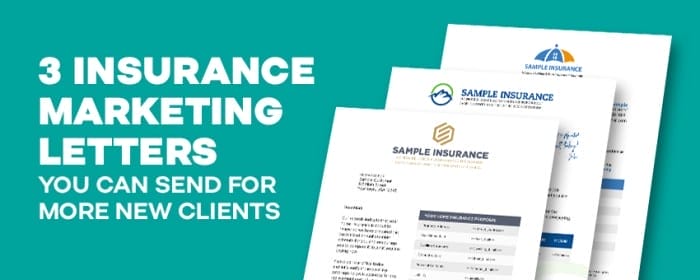
A/B testing is a crucial strategy for optimizing email campaigns and driving better results. It involves sending different versions of an email to a sample of your audience to determine which version performs better.
By conducting A/B tests, you can gain valuable insights into the effectiveness of various email elements, such as subject lines, email body content, call-to-actions, and design. This knowledge enables you to make data-driven decisions and improve the overall performance of your email marketing campaigns.
Designing and Implementing A/B Tests
To design and implement effective A/B tests, follow these steps:
- Define Your Objective: Clearly define the goal of your A/B test. Are you aiming to increase open rates, click-through rates, conversions, or other metrics?
- Choose Your Variables: Select the email elements you want to test. Common variables include subject lines, email body content, call-to-actions, and design elements.
- Create Variations: Develop different versions of the email elements you’re testing. Ensure the variations are significantly different to yield meaningful results.
- Randomly Assign Recipients: Divide your email list into two or more groups randomly. Each group will receive a different version of the email.
- Track and Analyze Results: Monitor the performance of each email variation using email marketing metrics like open rates, click-through rates, and conversions. Analyze the results to determine which variation performed better.
Using A/B Testing Results for Continuous Improvement
Once you have the results of your A/B tests, use them to continuously improve your email marketing campaigns:
- Implement the Winning Variation: Implement the version of the email that performed better in your A/B test. This will help you improve your email campaign performance immediately.
- Test New Variables: Continue testing different email elements to identify further opportunities for improvement. Over time, you can optimize various aspects of your email campaigns to achieve better results.
- Monitor Performance Over Time: Keep track of the performance of your email campaigns over time. This will help you identify trends and make adjustments as needed to maintain optimal performance.
By conducting A/B tests and using the results to continuously improve your email marketing campaigns, you can increase engagement, drive more conversions, and achieve better overall results.
Integrating Email Marketing with Other Channels
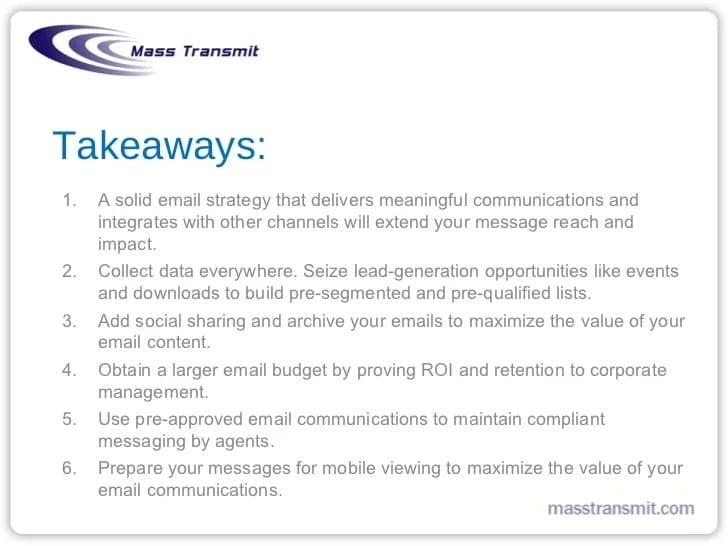
A cohesive marketing strategy hinges on the effective integration of email marketing with other marketing channels. This synergy amplifies brand reach, enhances customer engagement, and drives conversions.By aligning email campaigns with social media, content marketing, and paid advertising efforts, businesses can create a seamless customer experience across multiple channels, fostering brand loyalty and driving desired actions.
Aligning Email Campaigns with Social Media
- Leverage social media platforms to promote email campaigns and capture email addresses.
- Share email content snippets on social media to pique interest and drive traffic to the email sign-up form.
- Utilize social media to conduct contests and giveaways that require email sign-ups, expanding your email list.
Integrating Email Marketing with Content Marketing
- Include email sign-up forms within blog posts, articles, and other content pieces to capture leads.
- Repurpose email content into social media posts, blog articles, and infographics to extend reach and engagement.
- Promote gated content, such as whitepapers and webinars, through email campaigns to generate leads and nurture prospects.
Coordinating Email Marketing with Paid Advertising
- Use email marketing to nurture leads generated through paid advertising campaigns.
- Segment email lists based on paid advertising data to deliver targeted and personalized email content.
- Create email campaigns that complement paid advertising messages, reinforcing brand messaging and driving conversions.
Final Summary
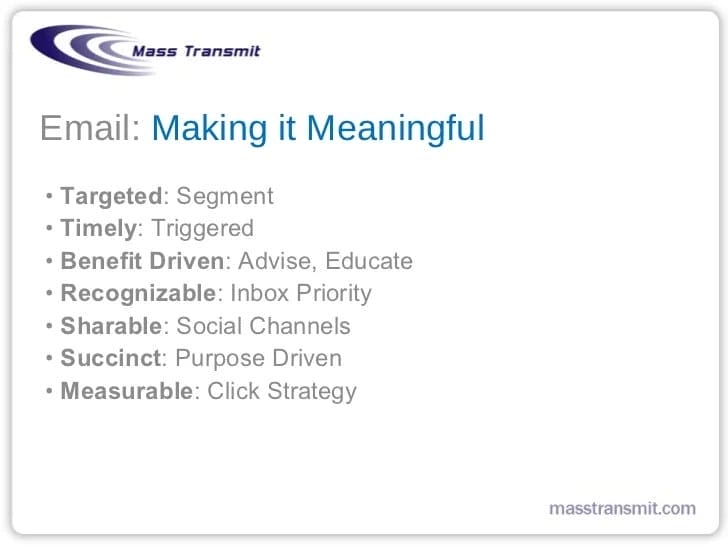
As you embark on your email marketing journey, remember that success lies in understanding your audience, personalizing your messages, and continuously refining your approach based on data and analytics. By implementing the strategies Artikeld in this guide, you’ll be well-equipped to harness the power of email marketing and transform your insurance sales pipeline.
Answers to Common Questions
Q: How can I create email subject lines that grab attention and increase open rates?
A: Craft concise and compelling subject lines that pique curiosity, create a sense of urgency, or offer a personalized touch. Keep it short, relevant, and avoid spam trigger words.
Q: What are some effective ways to personalize email content for insurance prospects?
A: Gather customer data such as demographics, preferences, and behavior to tailor your emails. Use dynamic content to deliver personalized messages that resonate with each recipient.
Q: How can I optimize email deliverability and ensure my messages reach their intended recipients?
A: Maintain a healthy email reputation by following best practices, such as obtaining consent, avoiding spam filters, and keeping your email list clean. Monitor deliverability metrics to identify and resolve any issues.
Q: What are the key performance indicators (KPIs) I should track to measure the effectiveness of my email marketing campaigns?
A: Common KPIs include open rates, click-through rates, conversion rates, and email ROI. Regularly review these metrics to assess campaign performance and make data-driven improvements.
Q: How can I integrate email marketing with other marketing channels to create a cohesive customer experience?
A: Align your email campaigns with social media, content marketing, and paid advertising efforts to reinforce your messaging and create a seamless customer journey. Use email to nurture leads generated from other channels and drive traffic to your website or landing pages.



